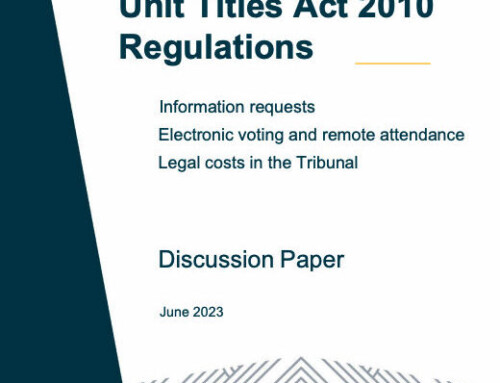The Building (Earthquake-Prone Buildings) Amendment Act 2016 (“EPB Act”) came into force on 1 July 2017. It amends the Building Act 2004 by introducing a new nation-wide regime for identifying and managing earthquake-prone buildings (new Subpart 6A). The legislative update comes in the wake of Christchurch, Sneddon and Kaikoura earthquakes. The changes replace the previous regime, which had been in place since 2006.
The Building (Earthquake-Prone Buildings) Amendment Act 2016 attempts to balance the protection of people from harm in an earthquake, the cost of strengthening or removing buildings, and the impact on New Zealand’s built heritage. Buildings affected include all commercial and industrial unit title developments. Residential unit title developments that comprise two or more storeys about ground level, and are used for hostel, boarding house, or other accommodation, or which contain three or more household units are also affected (other residential buildings are exempt).
An earthquake-prone building (“EPB”) is one that will have its ultimate capacity exceeded by a “moderate earthquake” and if it collapsed, would cause injury or death to people in the building or nearby or would damage other property. The test, therefore, requires consideration of the strength of a building compared to a new building in the same location, and the effect of building collapse. If a building has a rating of less than 34% of new building standard (“NBS”) it will be an EPB.
The EPB Act identifies three levels of seismic risk across New Zealand. The timeframe, within which EPB must be identified, and strengthened or demolished, is determined by the seismic risk area a building is located in as follows:
Areas of seismic risk
| High | Gisborne, Napier, Hastings, Palmerston North, Wellington, Blenheim, Christchurch |
| Medium | Tauranga, Hamilton, Rotorua, New Plymouth, Whanganui, Nelson, Timaru, Invercargill |
| Low | Northland, Auckland, Oamaru, Dunedin |
Timeframes for action
| Seismic risk area | Identification by Priority Buildings | Identification by Other Buildings | Seismic work within Priority Buildings | Seismic work within Other Buildings |
|---|---|---|---|---|
| High | 1 Jan 2020 | 1 July 2022 | 7.5 years | 15 years |
| Medium | 1 July 2022 | 1 July 2027 | 12.5 years | 25 years |
| Low | 1 July 2032 | 1 July 2032 | 35 years | 35 years |
Priority buildings are:
- hospitals;
- buildings used for emergency shelters/centres;
- buildings housing emergency response services;
- early childhood education and care centres, schools, private training establishments, and tertiary institutions for at least 20 people; and
- parts of unreinforced masonry buildings that could fall onto strategic transport routes, or areas that carry vehicles and pedestrians in numbers that justify prioritising the building.
The EPB Act requires the following actions from territorial authorities (district councils or unitary authorities like Auckland Council) and building owners:
- Territorial authorities must identify potentially EPB by applying the EPB methodology;
- Owners of buildings identified as potentially EPB must obtain engineering assessments by qualified engineers at their cost within 12 months. For a unit title development, the obligation to obtain and pay for an engineering assessment would lie with the body corporate;
- On receipt of the engineering assessment the territorial authority must determine whether building is and EPB, assign a rating (% of NBS), issue an EPB Notice, and update the register of EPB; and
- The building owner (body corporate) must display the EPB Notice on the building and carry our strengthening work or demolish the building (“seismic work”) within the specified timeframe from the date of the EPB Notice.
A building owner (body corporate) may apply for extensions/exemptions in respect of:
- the timeframe to obtain an engineering assessment by up to 12 months;
- the timeframe to complete seismic work; and
- the requirement to complete seismic work.
The EPB methodology specifies the following criteria for identifying a building as a potentially EPB:
- constructed of unreinforced masonry;
- built pre-1976 and three or more storeys above ground level; or
- built pre-1935 in the high or medium seismic risk areas (except for timber buildings).
Bodies corporate which are caught by the EPB Act are therefore obliged to obtain an engineering assessment if the building is identified as a potentially EPB. And, if the building is an EPB, must complete seismic work within the prescribed timeframe from the issue of the EPB Notice. Bodies corporate should also take care to review the disclosure requirements of their insurance policies in respect of earthquake risk.
Matters Advised on:
We have recently advised bodies corporate, unit owners, and body corporate managers on:
- acquisition of common property under the Public Works Act
- operational rules
- additions and alterations to unit property
- disclosure on the sale of unit property
- debt recovery
Source: Glaister Ennor
Tim Jones, Property
Paul McKendrick, Litigation & Dispute Resolution
Vicki Toan, Resource Management







